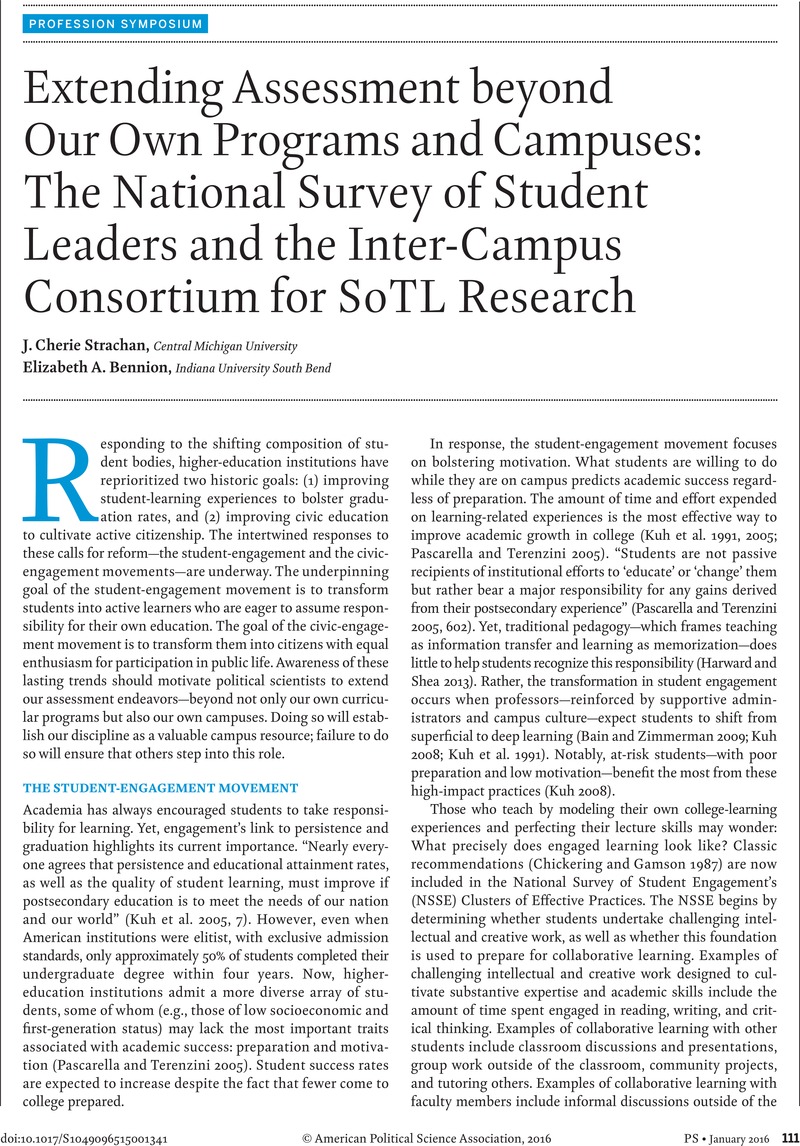Crossref Citations
This article has been cited by the following publications. This list is generated based on data provided by Crossref.
Mallinson, Daniel J.
and
O’Hanlon, Erin
2017.
Between the Patient and Politics – A Ready-to-Use Simulation for Human Service Practitioners.
Simulation & Gaming,
Vol. 48,
Issue. 6,
p.
855.
Bennion, Elizabeth A.
and
Laughlin, Xander E.
2018.
Best Practices in Civic Education: Lessons from theJournal of Political Science Education.
Journal of Political Science Education,
Vol. 14,
Issue. 3,
p.
287.
Robiadek, Katherine M.
Strachan, J. Cherie
and
Bennion, Elizabeth A.
2019.
Assessing Democratic Engagement through Student Organizations.
Journal of Student Affairs Research and Practice,
Vol. 56,
Issue. 5,
p.
595.
Bennion, Elizabeth A.
2023.
The Palgrave Handbook of Teaching and Research in Political Science.
p.
285.



